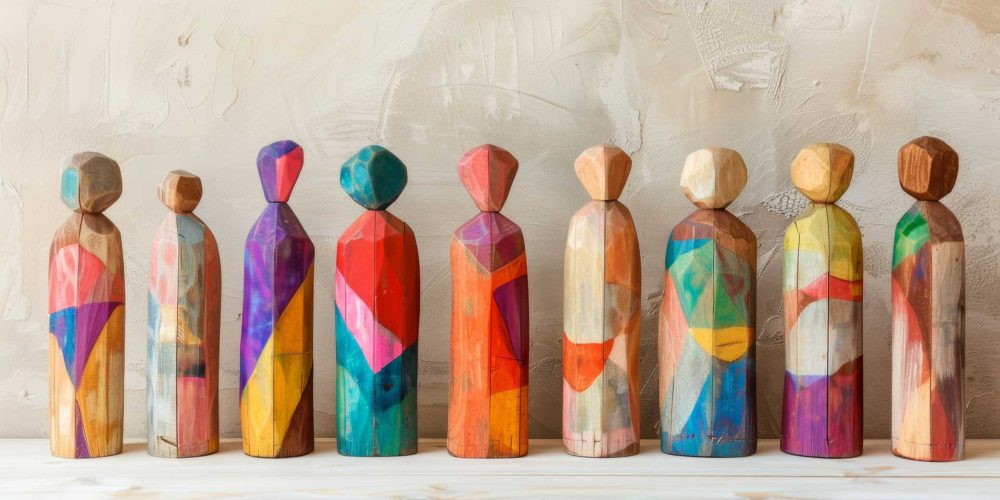In my last blog post, we talked about the preponderance of CEOs named John and David and the jaw-dropping statistics that prove we’re all better off when our workplaces are more open, accepting, and diverse.
Today, I’m getting into the nitty-gritty of how we, as Courageous Leaders, can be stronger allies for our incredibly valuable yet overlooked and underappreciated team members. This is all part of my popular and eye-opening “Courageous Leadership: Creating Courageous Allies” program.
Becoming stronger allies and creating better allies across our teams isn’t as challenging as it seems. I like to break the process down into four parts: listening and learning, deciding, noticing and correcting, and ongoing awareness and action.
1. Listen and learn; get to know your coworkers
The first step to becoming a better ally is asking genuine questions about a person’s professional strengths and goals. Then really listening to the answers we’re given. This means not being too quick to jump in and say, “Oh my gosh, me too!” Then giving an example of how we’re alike.
The listening step is really about tuning in to specific career experiences, skills, and successes that we can share with others who may not know or understand this person very well. “Did you know that Bri has a deep background in analytics?”
When we understand a person’s strengths and career goals, we can follow up by asking how, specifically, we can help them achieve those goals. “Would it help if I recommended you for an upcoming analysis project?”
Other aspects of listening and learning involve broadening our worldview. This means taking time to read about and understand perspectives that are different from our own. And attending events with groups of people who don’t necessarily look or think like we do, with a genuine interest in their point of view and life experiences.
If your organization doesn’t have them yet, consider launching one or more Employee Resource Groups (ERGs). These are remarkably useful employee-led groups that offer a safe space where individuals can bring their whole selves to the table to give and receive support. Attending these sessions as an ally can be enlightening and help you build your own allyship.
2. Decide what type of allyship you should provide to make real change
If you’re a SPONSOR, you …
- Know your coworkers’ strengths and recommend them for projects and roles.
- Share your coworkers’ goals with influencers to help them build their brands.
- Highlight and recognize your coworkers’ wins.
If you’re an ADVOCATE, you …
- Notice who’s invited, and who’s not, and make recommendations for inclusion.
- Advocate for coworkers to lead presentations, get speaking opportunities, and participate in panels and decision-making sessions.
- Call people in as “expert witnesses” to ensure that those with proficiency in a particular area are the ones providing answers.
If you’re an AMPLIFIER, you …
- Run meetings in a way that allows everyone present enough time to speak and be heard.
- Repeat or amplify the contributions of those who get “spoken over” or dismissed.
- Ask meeting attendees who seem hesitant to participate to weigh in on the topic at hand.
- Ask specific questions to generate deeper participation and meaningful contributions from all who are present.
Hint: You can be more than one type of ally, and being all three is what’s needed to really change our workplaces.
3. Notice microaggressions and help educate those who share them
We’ve all experienced or witnessed what are called microaggressions in the workplace. These are often off-hand statements that reveal someone’s unconscious bias. While they may seem inconsequential to the speaker, they actually crush the confidence of the recipient and can severely hinder the person’s ability to move upward in their careers because of the narrative they create.
Some examples are:
To a female CEO: “Can I speak with your boss?”
To a man who’s a nurse: “You don’t see many male nurses.”
Discussion about a woman’s promotion: “Will she be able to juggle the travel with her kids?”
To an LGBTQ+ intern: “Huh, you don’t sound gay.”
To a non-white colleague in a mostly white office: “So, where are you from? … No, I mean, where are you really from?”
To a non-white presenter: “Wow, your English is so good.”
To me at the Inc. 5000 Fastest Growing Companies: “Which CEO are you here with?”
(Me: “That would be me.”)
Chances are, you’ve witnessed one or more of these cringe-inducing moments. You may even have stepped in to comfort a coworker afterwards. Or been the recipient of the remark yourself. I certainly have.
Microaggressions are one of the most challenging aspects of being an ally because they involve real action. First, we need to notice when a microaggression occurs. Second, we need to call it out using our Courageous Conversation skills to broaden understanding and make sure it never happens again.
“Geoff, I love that you’re trying to connect with people, but you made a hurtful assumption there. Let’s talk about the facts so you can approach people in a more informed way in the future.”
4. Practice ongoing awareness and action
Becoming a true ally takes self-awareness and practice. Here is my 7-Point Checklist of things we can all do as leaders of people to ensure everyone gets to play:
- Never make assumptions. Learn the facts and work from there.
- Create specific metrics and review them publicly at team and leadership meetings.
- Ask for specifics about how to move people forward in their careers and within the organization.
- Nominate under-represented people and people with valuable and unique perspectives for honors, clubs, teams, projects, and boards.
- Post an assignments list publicly to ensure transparency about who is being “chosen.”
- Use “meeting maps” to monitor participants’ “airtime,” ensuring everyone becomes aware of any unconscious bias.
- Decline to participate in platforms and events that are non-diverse or non-representative.
If there’s one thing we ALL have in common, it’s a distaste for awkward, uncomfortable, and hurtful experiences in the workplace. Ew. Nobody wants that.
Now that you are equipped with this set of clear, tactical action steps, my hope is that you’ll see every new day as an exciting opportunity to advocate for, amplify, and sponsor women, BIPOC+, and LGBTQ+ team members and coworkers. And that you’ll feel empowered to teach your team members to do the same for each other. Your efforts will boost everyone’s contributions and careers, and your organization’s productivity will soar.
WHAT’S NEXT? Right now, at Cindy Solomon & Associates, we are neck deep in Courageous Leadership training for the cultures of the future. If you’re an executive or leader seeking guidance on how to engage and inspire your teams to perform beyond their wildest dreams, go to www.courageousleadershipinstitute.com to grab a webinar, workshop, or keynote customized to your organization’s specific needs.









